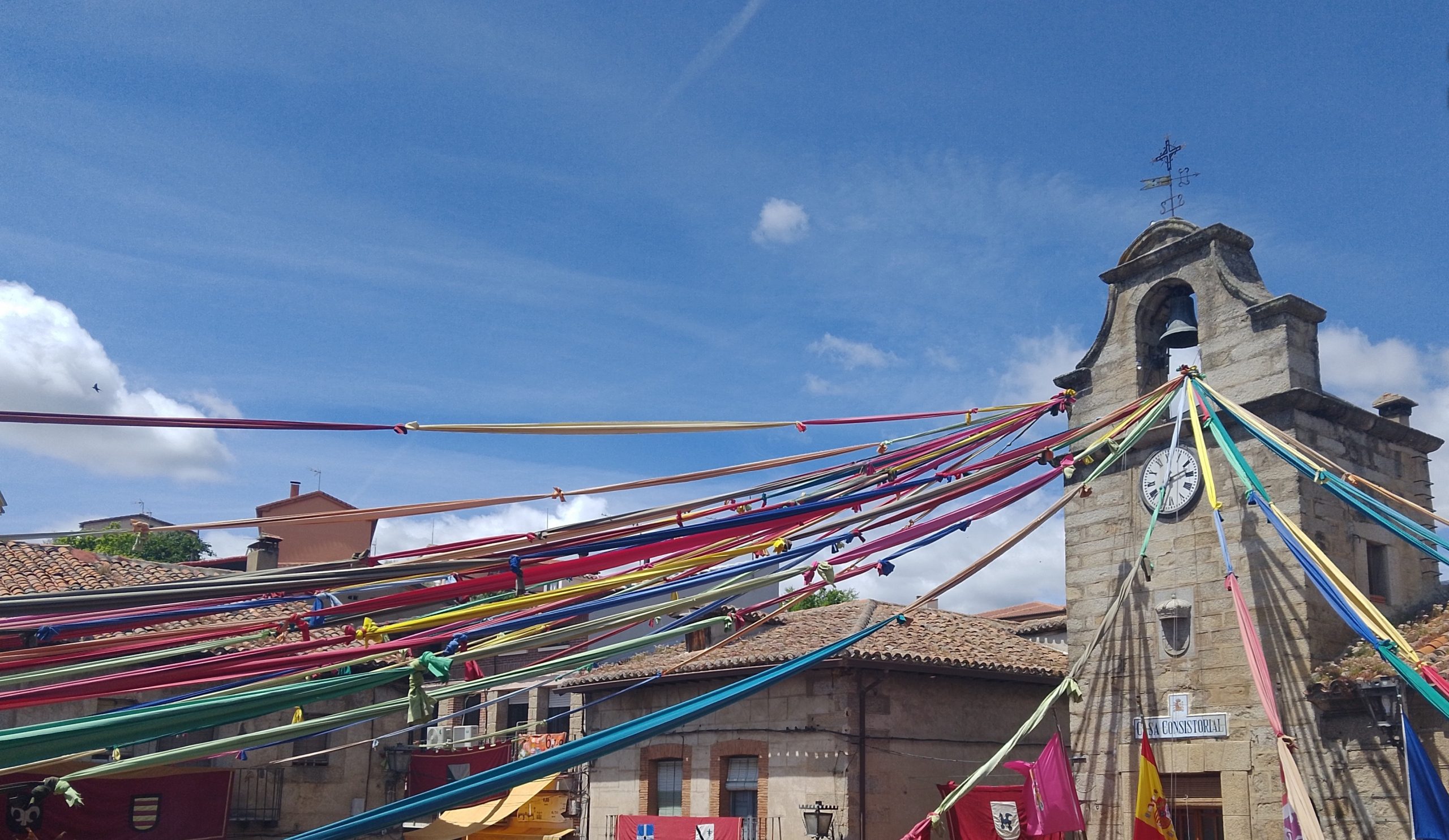“La Adrada captivates, La Adrada advances.” A municipality of almost 3,000 inhabitants located in the Tiétar Valley, south of the province of Ávila.
At an average altitude of 624 m, the municipality is protected from the cold by the Sierra de Gredos, surrounded by lush forests of great NATURA 2000 ecological value and accompanied by the winding Santa María Gorge.
It has an enviable climate for enjoying nature and hiking and cycling at any time of year.
Not only will you enjoy the surrounding orchards, but its important historical heritage is presided over, from the Torrejón hill, by a 14th-century medieval fortress owned by various historical figures: Constable Ruy López Dávalos, Don Álvaro de Luna, Don Antonio and Don Beltrán de la Cueva, and Doña Juana Pimentel, which has been visited by the Royal Council of the Autonomous Communities on several occasions. This Site of Cultural Interest houses the Tiétar Valley Historical Interpretation Center (CIHVT) and has a hall for temporary exhibitions.
During the walking tour of the historic center, you can see monuments such as the Church of El Salvador and the Hermitage of the Virgen de la Yedra, the Casa del Tío Talis, the House of the Jerónimos Fathers, who managed the paper production in La Adrada, the Plaza de la Villa, and Calle Larga, filled with noble coats of arms.
Adding to this cultural heritage are the Aprisquillo Pine, a natural symbol awarded the Spanish Tree of the Year award in 2016, the Charco de la Hoya, and the Pinara Dam.
It boasts a rich gastronomy with dishes such as “Salmorejo Adrada,” “Blouse of Blood Sausages,” and “Patatas Revolconas,” along with excellent local products such as Monte Enebro Cheese and “Bollos de San Blas.”
It offers a combination of cultural and sporting activities throughout the year, including “Weekend Plans for Everyone in La Adrada,” “Folklore and Bobbin Lacemaking Meetings,” astrotourism routes, the La Adrada Trail, and the 2025 Indoor Soccer Marathon, among others. Annual events include religious festivals; Festivals of San Blas, El Salvador, and the Virgen de la Yedra, the traditional Fair of Los Santos, and the Medieval Market of La Adrada, one of the oldest in Castile and León and declared a Festival of Regional Interest.
| Admission to the Smart Tourism Destinations Programme | The diagnostic process and action plan for the La Adrada Smart Tourism Destination will begin in January 2022 and will be completed in December 2022. |
| Outstanding initiatives
|
Institutionally, La Adrada has established policies aimed at rural revitalization, job creation, social participation in economic development, and environmental protection, with funding from the NextGenerationEU Recovery, Transformation, and Resilience Plan, the Provincial Council of Ávila, and the Regional Government of Castilla y León.
These policies include support for the progressive implementation of the 2030 Agenda’s SDGs and membership in the 2030 Agenda’s Local Entities Network. Its commitment to a 360° sustainable and smart development model is evident in the La Adrada Strategic Plan for Sustainable Tourism Development 2023-2230, which among its main actions includes the creation of cycling and slow-mobility infrastructure to facilitate urban-rural connections, improving accessibility, and the beautification and technological updating of tourist attractions. The new Smart Office technical offices in La Adrada are the coordinating center for the municipality’s new Smart City systems for intelligent management and monitoring of the DTI model. The new Tourist Office at 18 Calle de la Nava offers a new service menu, accessible spaces, and the option to participate in the “Paper Footprints” virtual experience upon reservation. Member of several networks:
|

